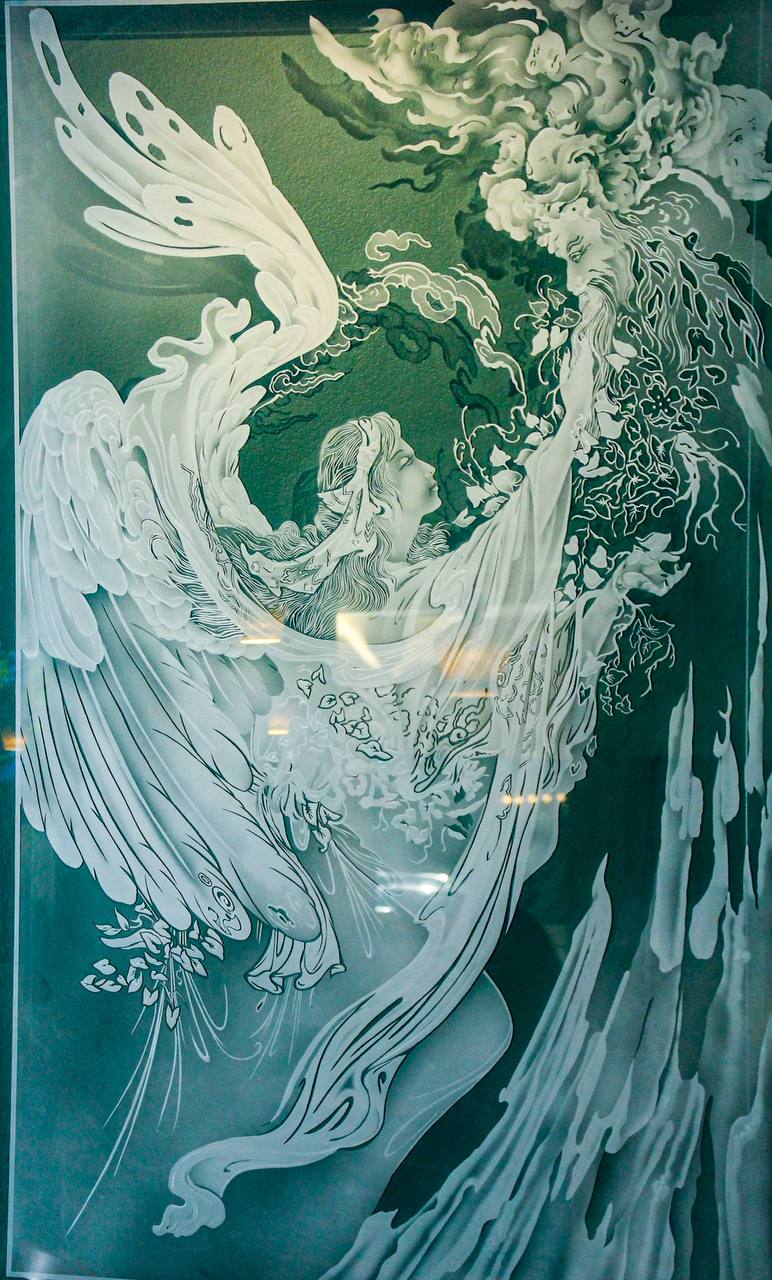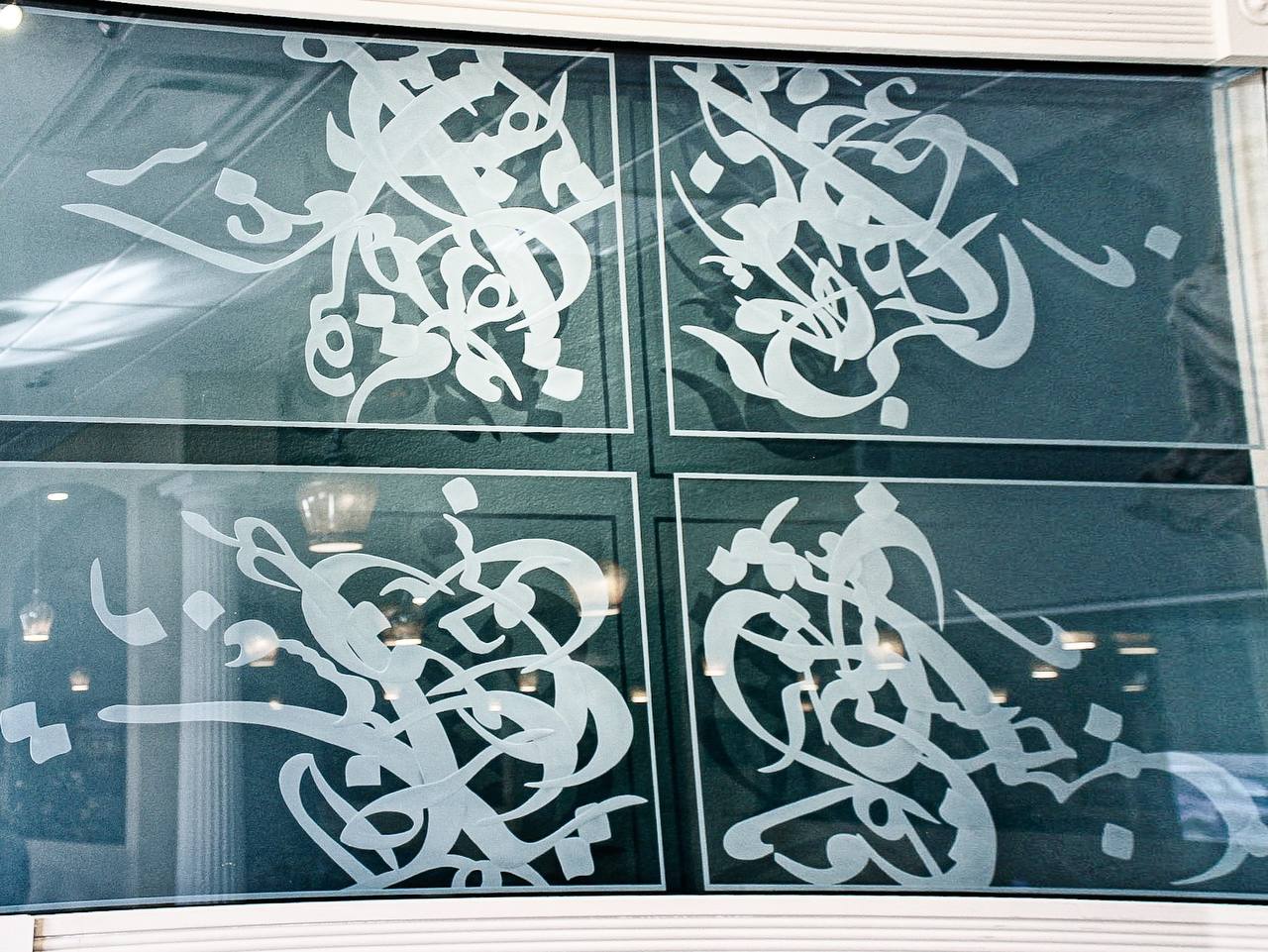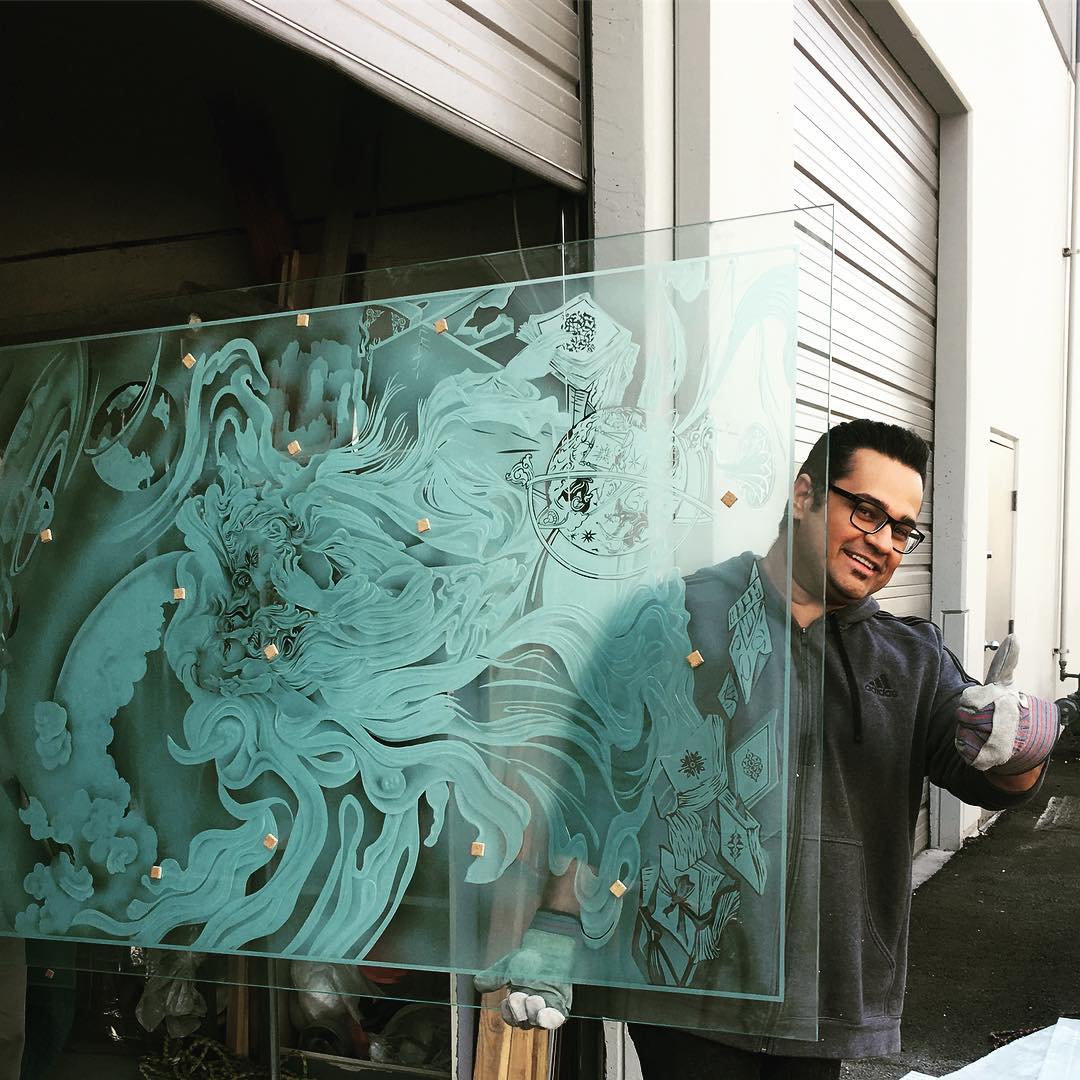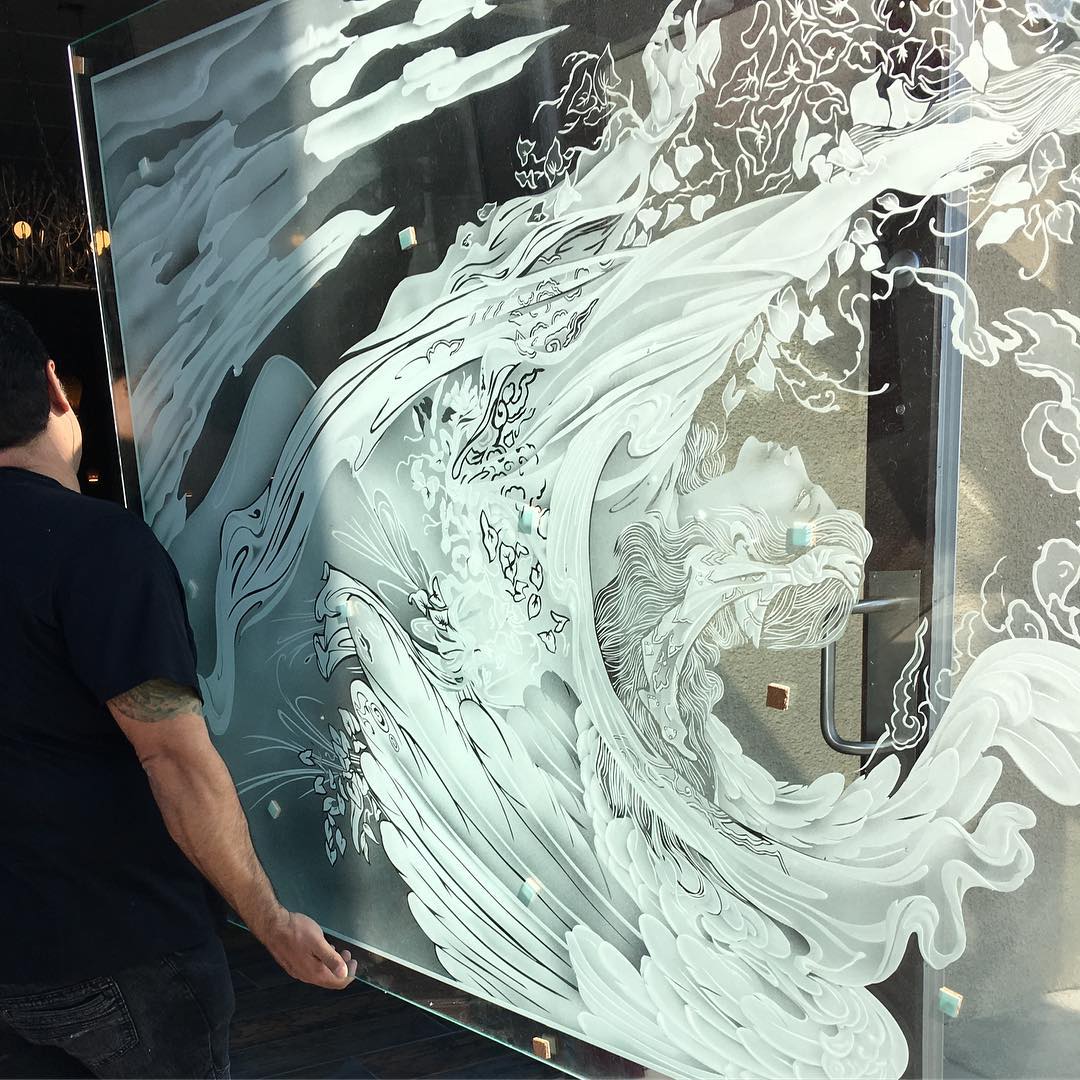
Single Blog
Related Post


Custom Etched Glass Gift with Dolphin & Sunset – A Unique Luxury Keepsake

Custom Etched Glass Wedding Venue Doors – From Sticker Removal to Stunning Design

Custom Glass Shower Door – Ariadne Inspired Deep Carving
Hafez Restaurant-Engraving Techniques
At Hafez Restaurant, every detail has been meticulously crafted to offer guests not just a meal, but an immersive experience. The restaurant’s atmosphere is enhanced by the deep-carved glass elements which serve as stunning focal points throughout the space, inviting patrons to explore the layers of art and culture woven into the dining experience.
Persian Glass Engraving: The Hafez Restaurant Project
By Ultimate Glass Etching LLC | Las Vegas, NV
Introduction
Persian art is a timeless expression of culture, history, and storytelling. At Ultimate Glass Etching LLC, we draw inspiration from this rich artistic heritage to create engraved glass masterpieces that connect tradition with modern design. One of our latest achievements—the Hafez Restaurant project—is a perfect example of how deep-carved glass can transform a dining space into a cultural experience.
Our commitment to craftsmanship is evident in every detail, particularly in our unique approach to persian glass engraving, which elevates the dining experience.
Our design philosophy is grounded in the belief that art should evoke emotions, tell stories, and transport individuals to different realms. Each piece created for Hafez Restaurant reflects the vibrancy of Persian traditions, providing a visual narrative that connects diners to the rich history of the Persian Empire.
Persian Art as an Inspiration
The influence of Persian art transcends time and geography, making it a perfect foundation for our creative endeavors. The use of flowing lines and intricate designs not only beautifies the space but also serves as a conversation starter among guests. Each motif chosen for Hafez Restaurant was selected to resonate with the themes of unity, love, and nature, which are central to Persian culture.
Our artistic vision for Hafez Restaurant was inspired by the graceful style of Mahmoud Farshchian, one of the most influential Persian artists. While the artworks used in the restaurant are not original Farshchian pieces, his expressive forms, poetic symbolism, and storytelling techniques guided our design approach. His work inspired us to translate the soul of Persian poetry and miniature art into engraved glass panels.
The Power of Deep Carved Glass
Deep carved glass is a technique that involves sandblasting layers into the surface of the glass to create depth, texture, and dimension. Unlike surface etching, this process allows for intricate detail and dramatic visual effects. It’s a highly tactile and luxurious form of engraving—perfect for capturing the fluidity and movement found in Persian art.
This technique allows the glass to play with light in unique ways, casting stunning shadows and reflections that dance across the surfaces of the restaurant. This dynamic interaction between light and glass creates an ever-changing ambiance, providing a fresh experience with each visit. As diners settle in, they become enveloped in a world where art and dining converge, enhancing their overall experience.
Project Spotlight: Hafez Restaurant
The Hafez Restaurant project was not merely about aesthetic appeal; it was an exploration of how art can enhance a dining experience, making it richer and more fulfilling. From the moment guests walk in, they are greeted with the captivating interplay of glass and design that reflects the essence of Persian hospitality.
Project Goals
Hafez Restaurant in Las Vegas aimed to create a sophisticated ambiance that reflects the elegance of Persian culture. Our mission was to design and install custom-etched glass and mirror features that elevate the space and immerse guests in a visual journey of poetry, nature, and tradition.
Our collaborative approach involved engaging with the restaurant owners to ensure that their vision was translated faithfully through our artistry. We conducted brainstorming sessions and workshops to understand their aspirations and how we could elevate their concept through custom-designed glass features.
Creative Process
We began by studying the space and identifying areas for visual impact. We designed custom floral and poetic motifs inspired by traditional Persian poetry, particularly the works of Hafez. After approval, we hand-etched these designs using deep carving techniques on premium glass and mirrors, and integrated them into the restaurant’s decor.
This process included creating scale models and mock-ups, allowing stakeholders to visualize the final outcome before it was executed. The feedback received during these sessions was invaluable and led to refinements that ensured the designs perfectly aligned with the restaurant’s identity.
Artistic Features
These artistic features were not only decorative but also functional, serving as dividers to create intimate dining spaces within the larger restaurant area. Each engraved piece told a part of the narrative we aimed to present, from the motifs that celebrate nature to those that pay homage to Persian poetry.
- Engraved mirrors featuring Persian calligraphy
- Glass panels with intricate floral and geometric patterns
- Custom decorative pieces with Arabic/Persian poems
- Wooden accents that harmonize with the glass features
Cultural Impact
Moreover, the cultural impact of such art goes beyond the physical space. It fosters a sense of connection among guests, many of whom are introduced to Persian culture for the first time. This exchange of cultural appreciation enhances their dining experience, making it memorable and enriching.
The integration of Persian-inspired glass art in Hafez Restaurant has created more than just a beautiful dining room—it has become a cultural experience. Guests often remark on the emotional impact of the artwork, which adds a storytelling layer to their visit. This project illustrates how decorative glass can serve both aesthetic and cultural purposes.
See the Transformation
We invite you to explore the video walkthrough of the project below:
Ready to Transform Your Space?
Every project we undertake reflects our commitment to excellence and our passion for transforming spaces into artful experiences. The combination of skilled craftsmanship and the deep-rooted traditions of Persian art makes our engravings not just decorations but also meaningful enhancements to any space.
Whether you’re designing a restaurant, hotel, or residential space, our custom glass engravings can bring your vision to life. Each piece we create is handcrafted, deeply etched, and completely one-of-a-kind.
? Contact us: Get a Free Consultation or call 702-301-3835
In conclusion, Hafez Restaurant is not just a place to dine; it is a celebration of Persian art and culture, beautifully encapsulated in the deep-carved glass elements throughout the restaurant. We invite you to visit and experience the artistry for yourself, where each piece tells a story and every moment is infused with the spirit of tradition.





